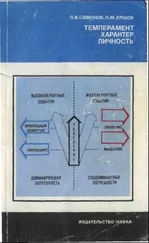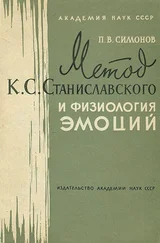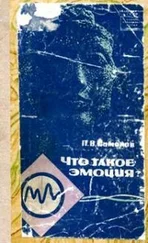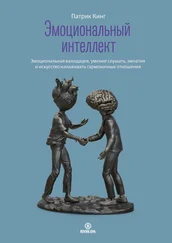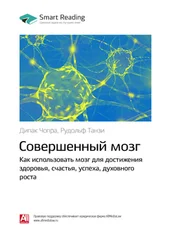Allport G. W . Becoming. Basic consideration for a psychology of personality. New Haven, 1955.
Allport G. W. Patterns and growth in personality. N. Y., 1961.
Andersen P., Eccles J. Inhibitory phasing of neuronal discharge. — Nature, 1962, vol. 196, N 4855, p. 645.
Arnold M. B. Emotion and personality, v. 2, Neurological and physiological as pects. N. Y.: Columbia Univ. Press, 1960.
Ball G. Separation of electrical self-stimulation and electrically elicited eating in the hypothalamus. — Communs Behav. Biol., 1969, vol. A3, N 1, p. 5.
Beatty J., Greenberg A., Deibler W., O’Hanlon J. Operant control of occipital theta rhythm affects performance in a radar monitoring task. — Science, 1974, vol. 183, N 4127, p. 871.
Begleiter H., Platz A. Cortical evoked potentials to semantic stimuli. — Psychophysiology, 1969, vol. 6, N 1, p. 91.
Bennett Th., French J., Burnett К. Species differences in the behavior correlated of hippocampal RSA. — Behav. Biol., 1978, vol. 22, N 2, p. 161.
Berlyne D. E. Information and motivation. — In: Human commun: Theoretical exploration. N. Y.: Hillsdale, 1974, p. 19.
Berlyne D. E. Curiosity and learning. — Motiv. and Emotion, 1978, vol. 2, N 2, p. 97.
Bovard E. W. A concept of hypothalamic functioning. — Perspect. Biol. and Med., 1961, vol. 5, N 1, p. 52.
Bovard E. W. The balance between negative and positive brain system activity. — Perspect. Biol. and Med., 1962, vol. 6, N 1, p. 116.
Brown B. Awareness of EEG — subjective activity relationships detected within a closed feedback system. — Psychophysiology, 1971, vol. 7, N 3, p. 451.
Bruner J. S., Postman L. Emotional selectivity in perception and reaction. — J. Pers., 1947, vol. 16, p. 69.
Buchtel H. A., Campari F., De Risio C., Rota R. Hemispheric differences in discri minative reaction time to facial expressions: preliminary observations. — Boll. Soc. ital. biol. sper., 1976 (77), vol. 52, N 18, p. 1447.
Bunnell B. N., Sodetz F. J., Shalloway D. I. Amygdaloid lesions and social be havior in the golden hamster. — Physiol. and Behav., 1970, vol. 5, N 2, p. 153.
Burton M. J., Rolls E. T., Mora F. Effects of hunger on the responses of neurons in the lateral hypothalamus to the sigth and taste of food. — Exp. Neurol., 1976, vol. 51, N 3, p. 668.
Gardner H., Ling P., Flamma L., Silverman J. Comprehension and apreciation of humorous material following brain damage. — Brain, 1975, vol. 98, N 3, p. 399. Casey K. L., Keene J. J. Unit analysis of the effects of motivating stimuli in the awake animal: pain and self stimulation. — In: Brain unit activity du ring behavior. Springfield, 1973, p. 115.
Church R. M. Emotional reactions of rats to the pain of others. — J. Comp. and Physiol. Psychol., 1959, vol. 52, p. 132.
Connor J., Watson P. A device for presenting attack opportunity as a reinforcer for operant behavior. — Behav. Res. Meth. and Instrum., 1977, vol. 9, N 4, p. 349.
Oytawa J. The nature of reinforcement in ingestive instrumental condition ing. — In: Abstracts of symposium on instrumental conditioning. Jablonna, 1979.
Cytawa J., Trojniar W. The state of pleasure and its role in the instrumental conditioning. — Acta nerv. super., 1976, vol. 18, N 1/2, p. 92.
Dawkins R. The selfish gene. Oxford: Univ. Press, 1977.
Deets A., Harlow H., Singh S., Blomquist A. Effects of bilateral lesions of the frontal granular cortex of the social behavior of rhesus monkeys. — J. Comp. And Physiol. Psychol., 1970, vol. 72, N 3, p. 452.
De Jong R., Italbashi H., Olson J. Memory loss due to hippocampal lesions. — Ach. Neurol., 1969, vol. 20, N 4, p. 339.
Delgado J. Physical control of the mind. N. Y. etc.; 1969.
Desiderata O., Newman A. Conditioned suppression produced in rats by tones paired with escapable or inescapable shock. — J. Comp, and Physiol. Psychol., 1971, vol. 77, N 3, p. 427.
Deutsch J. A., Howarth C. J. Some tests of a theory of intracranial self stimulat ion. — Psychol. Rev., 1963, vol. 70, N 5, p. 444.
Dimond S. L., Farrington L., Johnson P. Differing emotional response from right and left hemispheres. — Nature, 1976, vol. 261, N 5562, p. 690.
Divac I., Kosmal A. Subcortical projections to the prefrontal cortex in the rat as revaeled by the horseradich peroxidase technique. — Neuroscience, 1978, vol. 3, p. 785.
Dlag J. Aggression and submission in monkey societies. — Anim. Behav., 1977, vol. 25, N 2, p. 465.
Douglas R. Pavlovian conditioning and the brain. — In: Inhibition and learning. N. Y.: Acad. Press, 1972, p. 529.
Douglas R., Pribram K. Learning and limbic lesions. — Neuropsychologia, 1966, vol. 4, N 3, p. 197.
Eisenberger R. Exploration of rewards that do not reduce tissue needs. — Psychol. Bull., 1972, vol. 77, N 5, p. 319.
Epstein S., Bahm R. Verbal hypothesis formulation during classical conditioning of the GSR. — J. Exp. Psychol., 1971, vol. 87, N 2, p. 187.
Flynn J. P. The neural basis of aggression in cats. — In: Neurophysiology and emotion. N. Y.; Rockefeller Univ. Press, 1967, p. 40.
Fonberg E. The motivational role of hypothalamus in animal behaviour. — Acta biol. exp., 1967, vol. 27, N 3, p. 303.
Ford J. G., Bremner F. J., Richie W. R. The effect of hours of food deprivation on hippocampal theta rhythm. — Neuropsychologia, 1970, vol. 8, N 1, p. 65.
Friedman M., Brown A., Roseman R. Voice analysis test for detection of beha viour pattern. Responses of normal men and coronary patients. — J. Amer. Med. Assoc., 1969, vol. 208, N 5, p. 828.
Frost R. O., Burish T. G., Holmes D. S. Stress and EEG alpha. — Psychophysio logy, 1978, vol. 15, N 5, p. 394.
Gantchev G., Danev S., Koitcheva V. La frēquence cardiaque an cours d’un travail de diffērente rēsponsabilitē et sa corrēlation avec la quantitē de 1’information reçue et ēlaborēe. — Activ. nerv. super., 1967, vol. 9, N 1, p. 25.
Gellhorn E. The tuning of the autonomic nervous system through the alteration of the internal environment (asphyxia). — Acta neuroveget. 1960, vol. 20, N 4, p. 514.
Greenberg R., Pearlman C. Cutting the REM nerve: an approach to the adapt ive role of REM sleep. — Perspect. Biol. and Med., 1974, vol. 17, N 4, p. 513.
Greene J. Th. Altruistic behavior in the albino rat. — Psychonomic Sci., 1969, vol. 14, N 1, p. 47.
Glaubman H., Orbach I., Aviran O. et al., REM deprivation and divergent think ing. — Psychophysiology, 1978, vol. 15, N 1, p. 75.
Gloor P., Amygdala. — In: Handbook of physiology, v. 2. Neurophysiology. Washington D. C.: Amer. Physiol. Soc., 1960, p. 1395.
Hailman H. The ontogeny of instinct. — Behaviour, 1967, Suppl., p. 15.
Hare R. Orienting and defensive responses to visual stimul. — Psychophysiolo gy, 1973, vol. 10, N 5, p. 453.
Hebb D. O. On the nature of fear. — Psychol. Rev., 1946, vol. 53, p. 259.
Henke P. G. Dissociation of the frustration effect and the partial reinforcement extinction effect after limic lesions in rat. — J. Comp, and Physiol. Psychol., 1977, vol. 91, N 5, p. 1032.
Henke P., Maxwell D. Lesions in the amygdala and the frustration effect. — Physiol. and Behav., 1973, vol. 10, N 4, p. 647.
Hess W. R. Psychologie in biologischen Sicht. Stuttgart: Georg Thieme Verl., 1968.
Hippocampus, vol. 2: Neurophysiology and behavior. N. Y.; L.: Plenum Press, 1975.
Читать дальше
Конец ознакомительного отрывка
Купить книгу


